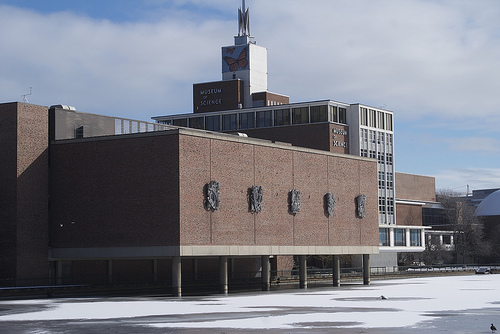


I visited the Boston Museum of Science at least half a dozen times before I was 12 years old, either on school field trips or excursions into the city with my family. While the historical monuments, the Boston Aquarium, and Fenway Park all held great appeal for my sister and I, the science museum was the place we wanted to return to the most often. The variety of exhibits meant seeing something different every time we visited, and no other tourist attraction in the city could offer the same level of interactivity.
Not surprisingly, the museum strives to achieve that same level of excitement and engagement for all its visitors, including people with disabilities. A quick glance at the accessibility information on its website reveals a nifty search engine that lets you match services for people with disabilities to museum resources. Another page supplies contact information for an accessibility coordinator to make any necessary arrangement in advance. The museum’s transportation page even makes optimal parking and public transportation suggestions for people with disabilities.
Credit for the museum’s efforts to achieve an experience where, as the website says, “everyone can participate equally in the excitement of science and technology learning,” can no doubt be spread among many museum employees, especially those who directly serve visitors with disabilities. But as it says in Business Strategies That Work: A Framework for Inclusion guide published earlier this year by the U.S. Department of Labor’s Office of Disability Employment Policy (ODEP), the path to inclusion starts with leadership.
For the Boston Museum of Science, that leader is director of research and evaluation, Christine Reich, who was acknowledged by the White House “Champions of Change” program back in May when it honored the efforts of 14 people who have advanced education and employment opportunities for people with disabilities in the field of science, technology, engineering, and math (STEM).
Barbara Mader, who covers special learning needs for Examiner.com, submitted a piece about Reich on Monday, along with another article detailing the museum’s efforts to provide universal accessibility to its exhibits and events. They recently invited more than 30 groups of visitors that included people with disabilities to experiment with new design ideas that will make seven exhibits even more accessible. Museum project manager Anna Lindgren-Streicher tells Mader that those accommodation enhanced the experience for everyone, not just people with disabilities:
Some of the ways the current exhibits incorporate these ideas are with text, graphics (pictograms), audio labels, and manipulatives. Lindgren-Streicher said that the variety of learning modes are not just used by special needs learners.
‘Although accessibility was designed for people with disabilities, we are finding that people access the information through what mode works best for them. One example is that English language learners often find audio output easier to use than reading text,’ she said.
People with and without disabilities engaging on the same level is the very definition of inclusion. Congratulations to the Boston Museum of Science for their much deserved accolades in making life matter more for these individuals and others. I need to make another trip there very soon.
Comments?
Image by Paul Hudson.